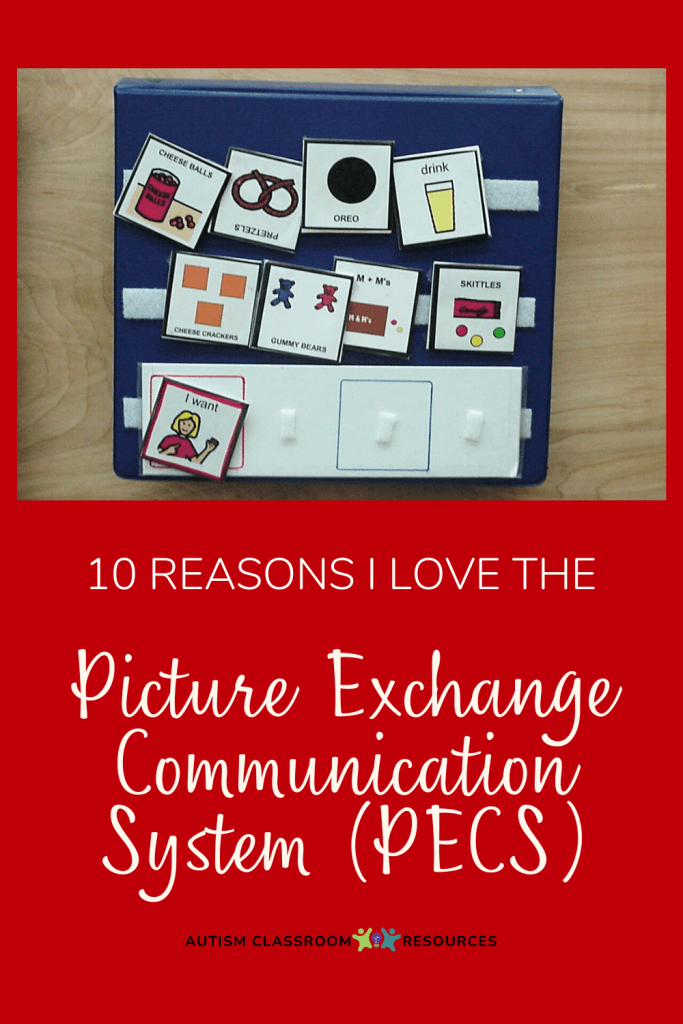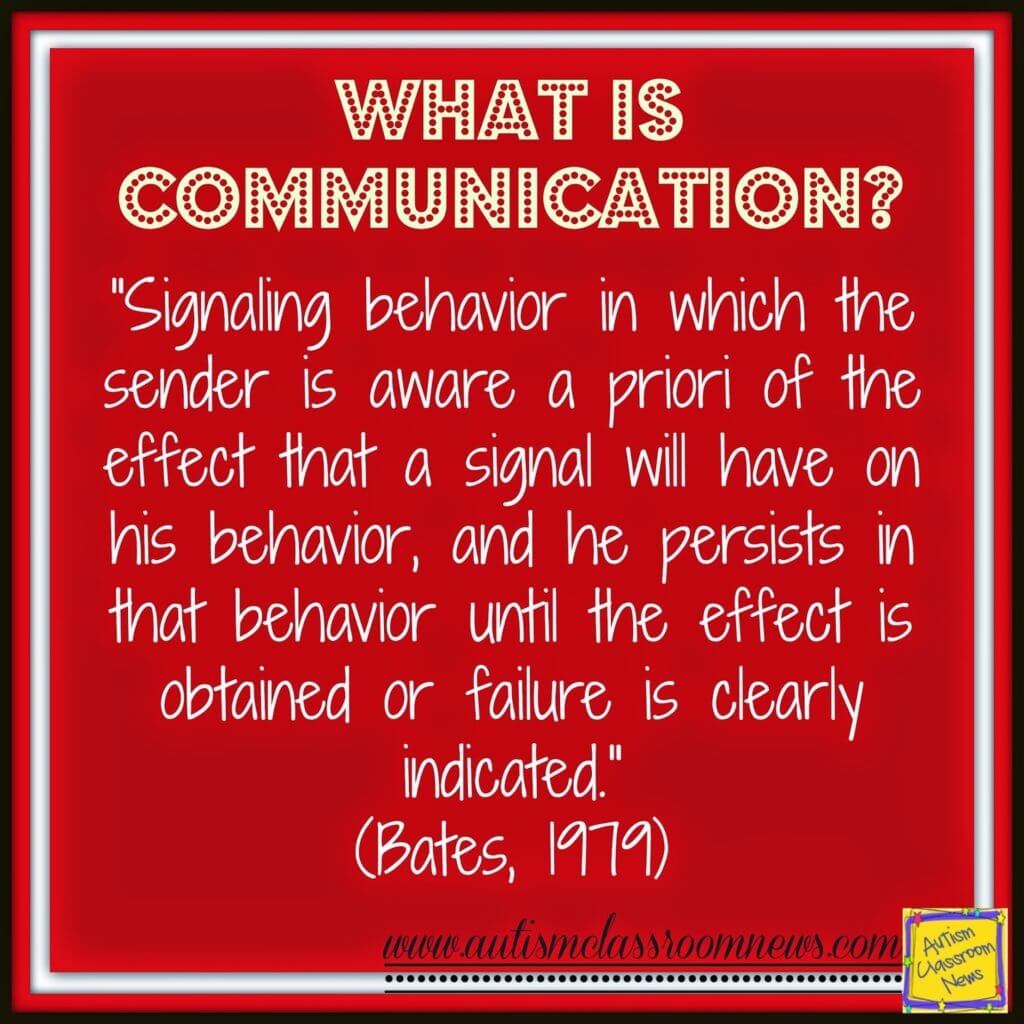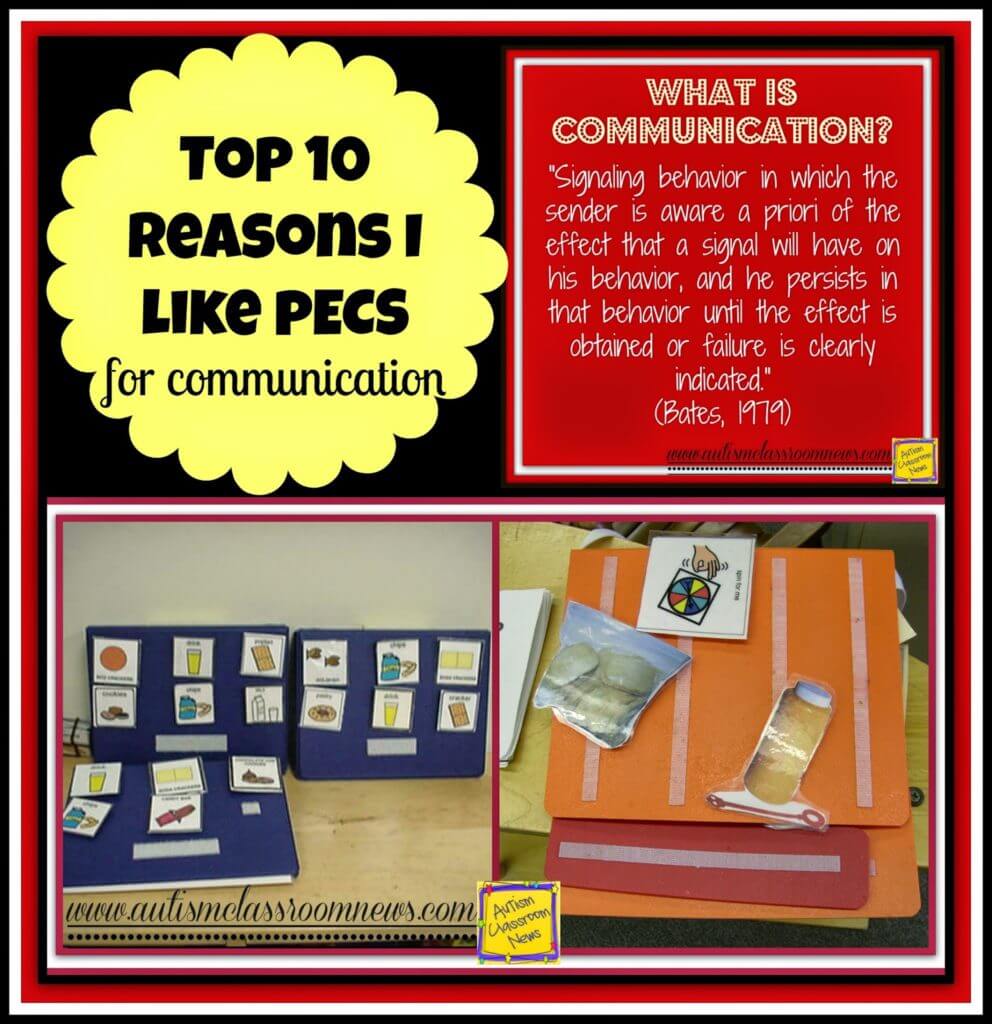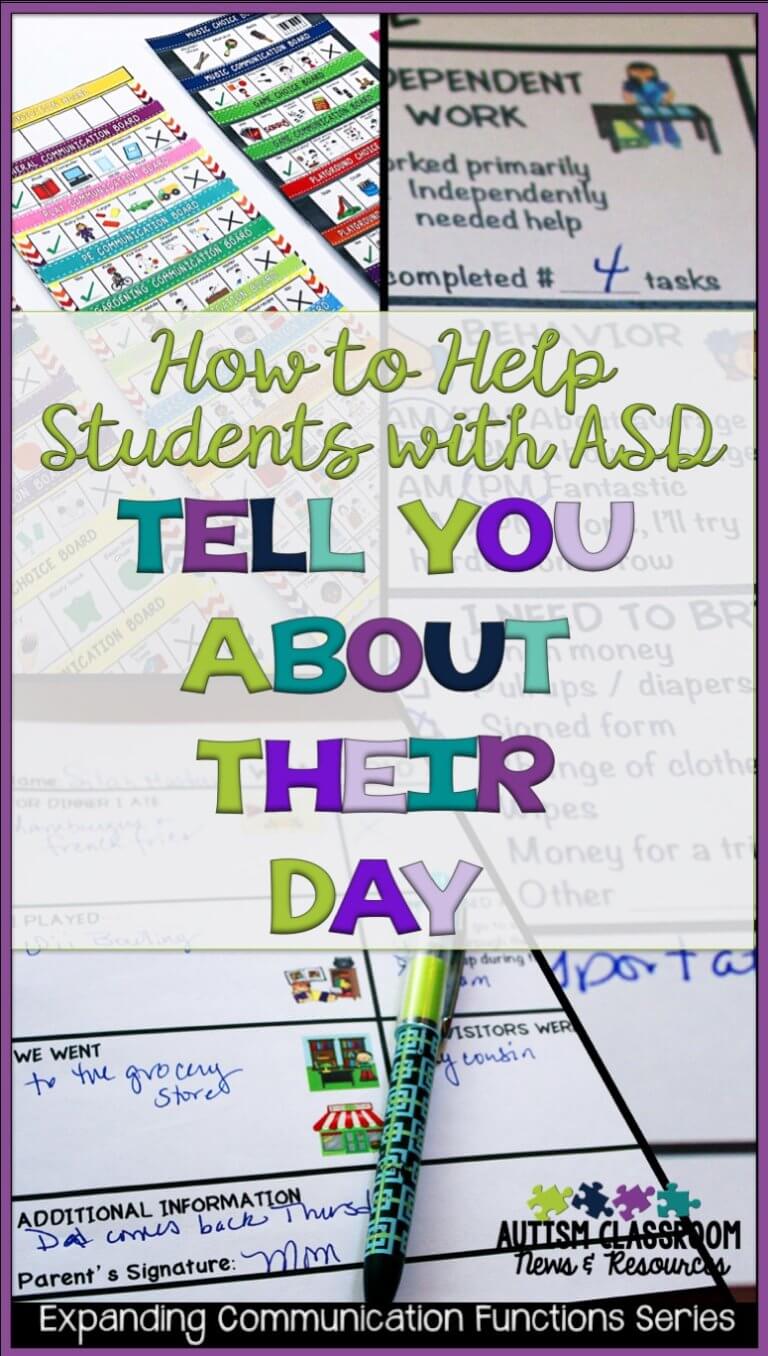Sharing is caring!

I talked in an earlier podcast about important considerations in addressing and expanding expressive communication skills for individuals with autism. In this post, I am focusing on one of my favorite methods of introducing communication for students who are either nonverbal or functionally nonverbal (they talk but don’t use language to get their needs met): The Picture Exchange Communication System (PECS).
PECS is a system for instructing students to communicate using pictures or symbols (pic/syms) in place of words. Students physically exchange a picture to request an item, to comment on or describe something, and eventually to have a conversation. The Picture Exchange Communication System encourages and models speech along with the picture exchange, but the picture is designed to serve in place of the words.
I can’t tell you how to implement PECS extensively in a blog post, but I will give you some resources for learning more about it and talk about the particular reasons that I think it’s such a good fit for kids with ASD.
1. The Picture Exchange Communication System is a Teaching System

Contrary to common belief, PECS is not an abbreviation for picture symbols. Although we sometimes call the pictures we use in the PECS system and the book they are kept in is called a PECS book, PECS as a term is NOT synonymous with pictures, schedules, or symbols used for communication.
I say this because it’s kind of a pet peeve of mine when people use it incorrectly, but more so because PECS is the SYSTEM that is used to teach communicating with pictures. The system has specific phases (6 to be exact) that are based on the science of verbal behavior–a part of applied behavior analysis devoted to all types of verbal behavior including text, speech, and communication in all forms.
There are specific stages of instruction and methods for teaching the initial exchange to request, to teaching students to discriminate between pictures, to travel to communicate, and later to comment and expand the functions of communication, all while modeling and encouraging speech. As such, the Picture Exchange Communication System serves as a low-tech AAC system.
2. PECS Makes the Act of Communication Tangible
There is so much more to communication than just naming something or asking for something. Individuals with autism’s communication difficulties create barriers to understanding the process of communication.

As Bates’ quote indicates, the individual has to know the messages, gain attention and deliver it, and persist in trying to send the message until it is delivered or it clearly has failed. This ability to communicate information is critical for effective interactions, even if it just starts with simple requests.
Individuals with ASD often will deliver a message verbally without gaining attention and the message is lost. Or they try once and give up when no one responds. The act of giving the picture to someone means they can’t just say something while standing on one side of the room and expect someone to respond to them–the communication act becomes tangible in that way.
The great thing about PECS is that in order to deliver that message, students have to find the picture and get the communicative partner’s attention in order to make the exchange. If the partner doesn’t take the picture, the communication is not completed.
So the student has to capture attention of the communicative partner in order for the communication to be effective. This makes the act of communication tangible for the individual.
3. PECS Focuses on Initiation
As I’ve noted in several other posts, individuals with autism often have difficulty initiating actions. This means that they will sit and wait for someone to ask, “What do you want?” or hands them an augmentative communication system or AAC device in order to say something.
I don’t know about you, but if I’m sitting at the table and I want more potatoes, I don’t wait for someone to notice that I want something and ask me what I want before asking. Instead, I get the attention of the person sitting near the potatoes and ask them to pass them to me.
Similarly, I don’t wait for someone to give me pictures to make that request if they don’t understand. Instead, if I can’t speak the language they understand, I would get their attention and point or draw a picture or use some other strategy.
This is initiating communication and is what we need to teach our students to do. They need to be able to voice their needs, wants and opinions just like the rest of us. To do that they have to initiate communication.
The Importance of Teaching Initiation
For many that means we need to TEACH them to initiate. PECS does this by not using the phrase / direction, “What do you want?” Instead it sets up tempting situations so the individual wants to communicate. Then, it uses prompting from behind that is nonverbal and more easily faded to help them make the initiate exchanges with the communicative partner to access the reinforcers.
This teaches the individual to communicate when they want something and eventually they have steps to teach them to travel to where the pictures are and the communicative partner is to deliver their message.

4. PECS Can Decrease Challenging Behavior
There is research that has found that the use of PECS to teach communication functions that serve the same need as challenging behavior can result in a decrease of the challenging behavior. Essentially, if I am hitting someone to access something to drink or a favorite item based on a functional behavior assessment, and you teach me to independently request those items that I need or want, the communication strategy can replace the challenging behavior.
This is a simple example and it is often more complex, but there is significant research that indicates that individuals (with and without autism) have fewer problem behaviors when they are better communicators. You can find more research specifically on PECS and behavior here.
The Picture Exchange Communication System provides a form of functional communication. It can be used for Functional Communication Training as I talk about it in this post. Functional Communication Training (FCT) has been effective in reducing challenging behavior through teaching replacement skills like communication skills that serve the same function.
5. PECS Can Encourage Speech
Many parents (and teachers) are afraid of any type of augmentative communication will inhibit individuals from developing speech. We have no research that has found this to be true.
We do have research that shows that PECS (and some other forms of AAC) can increase speech over time. Some individuals naturally drop using PECS when they become more proficient because using their speech is much more efficient.
For those who don’t, PECS builds in reinforcement protocols and strategies for encouraging and reinforcing speech specifically. As such, learning to communicate makes it more likely that individuals will use speech; and if they don’t use speech proficiently, it gives them a functional way to communicate.
6. It’s Highly Interpretable
Pictures are easy to understand. Sign language and some individuals’ speech is difficult to interpret, not used effectively, and can lead to many situations that an individual is not able to make him or herself misunderstood. Pictures are easy to understand for everyone (because we usually have labels on them as well as the pictures), everywhere. This makes communication efficient and successful across environments and encourages more communication.
7. It’s Expandable
Once the student is able to use one picture and make the exchange, the system moves to teaching them to travel to the book and the partner. It also begins to expand the length of a student’s communication using a sentence strip as well as increasing the functions of their communication to describing items in the requests and then to commenting.

8. It Builds on Strengths
Pat Mirenda makes the point that individuals with autism typically (not always) are weaker in motor imitation, fine motor ability, and representative memory. Often they are stronger in visual discrimination or visual perceptual skills.
Because PECS is a selection-based strategy it capitalizes on students’ strengths to teach to their weaknesses–their visual perceptual skills to address their weaker communication skills. This is different than sign, for instance, that requires the student to imitate motor movements, execute with acceptable precision fine motor movements, and represent the motor movements learned for each word mentally. Check out this post about this issue and choosing forms of communication, as there are pros and cons for each.
9. Picture-based AAC is Cheap
While this isn’t a reason in and of itself, picture books are inexpensive to make and can be made more easily than ever with image searches on the computer and cameras on everyone’s cell phone. All you need is a notebook, pictures, laminate and Velcro. And you have those in your classroom already. This means you can get a system up and running fast, while you wait for a full AAC evaluation or a device to be recommended or ordered.
This is not to say that every student should automatically start on a low tech AAC system, but it is a good way to get up and started with a research-based systematic approach with very little funding. In other words, there is no excuse NOT to teach communication.
10. It’s Evidence Based
If you’ve read this blog for any length of time, you know how important this to me. PECS is a deeply researched evidence-based practice. You can read more specifics on their site here.
And grab the AFIRM module (sign up is free) for a tutorial and review of the research.
Additional Thoughts About PECS as an Autism Intervention for Communication
There are even more reasons I love PECS. Some of the things I hear about it indicate that people think PECS are used mostly to teach nonverbal autistic students. While it is very useful for students who are nonverbal, I’ve used it with students who have emerging verbal skills, or who are verbal but sometimes need visual cues to get started.
The use of a picture system is something that students will fade out on their own at times. And verbal students will quickly learn it’s faster to say the thing they want rather than find the picture and make the exchange.
Clearly, PECS aren’t all you need for effective communication in the classroom But, it can be a huge and inexpensive tool to help your students learn to successfully communicate a wide variety of functions of communication.










